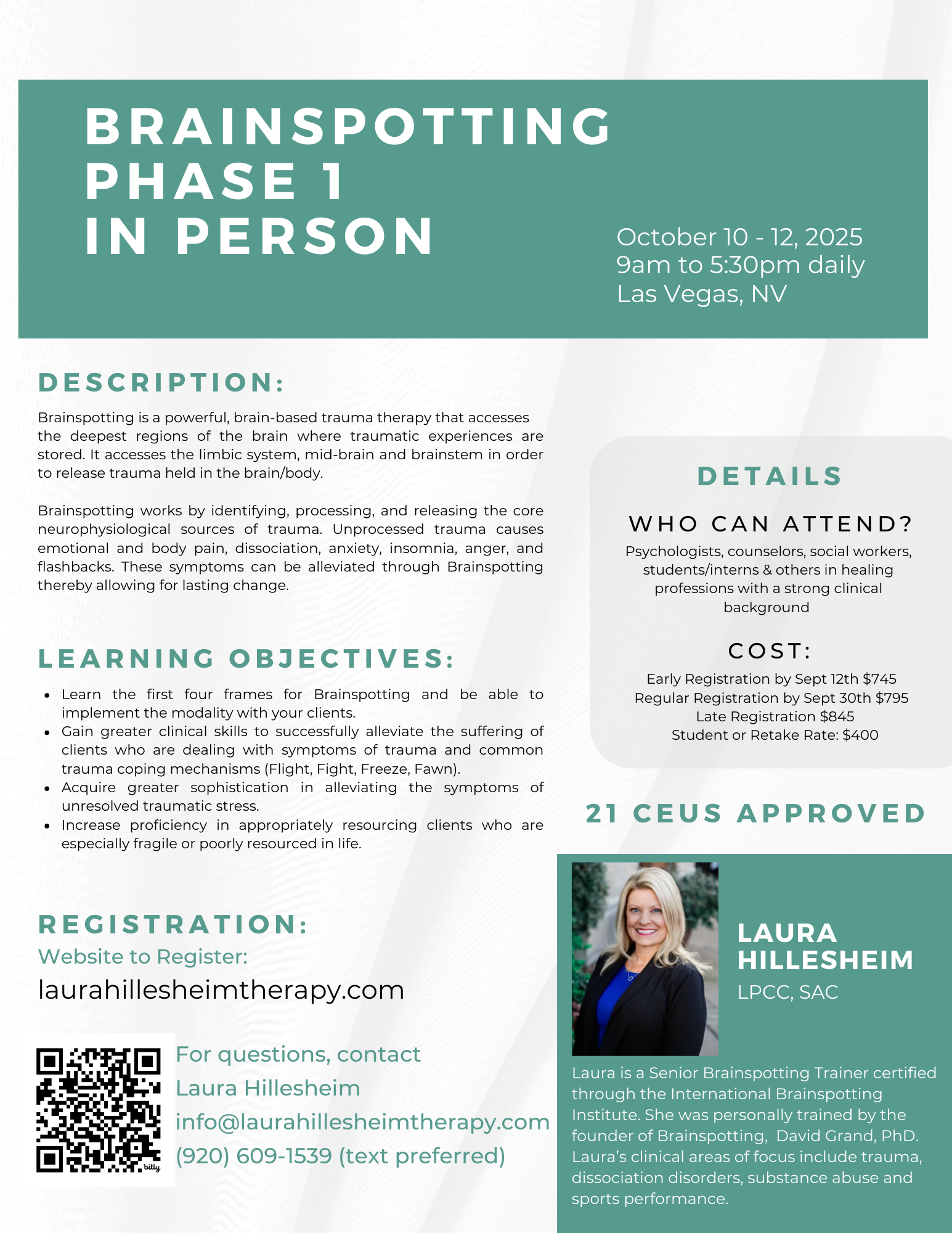Phase 1 & Phase 2 Overview
The 3-day Brainspotting Phase 1 training introduced Brainspotting as a powerful, focused treatment method that works by identifying, processing and releasing core neurophysiological sources of emotional/body pain, trauma, dissociation and a variety of challenging symptoms. Brainspotting is a simultaneous form of diagnosis and treatment, enhanced with BioLateral sound, which is deep, direct, powerful yet focused and containing.
Brainspotting identifies activated eye positions designated as Brainspots. Located through either one or both eyes, Brainspots are observed from either the “Inside Window” of the clients felt sense and/or the “Outside Window” of the clients’ reflexive responses (i.e., blink, eye twitches or wobbles, pupil dilation, quick breaths and subtle body shifts). Students will first learn the phenomenological approach that underpins strategies for Brainspotting, followed by strategies for identifying and processing Brainspots. Attention will be given to the utilization and integration of Brainspotting into ongoing treatment, including highly dissociative clients. Brainspotting is adaptable to almost all areas of specialization.
Brainspotting provides therapists with powerful tools which enable their patients to quickly and effectively focus and process through the deep brain sources of many emotional, somatic and performance problems.
In this introductory Brainspotting Phase 1 training, participants will learn four basic brainspotting techniques. In addition, participants will receive and overview of the standards of care and professional practice for brainspotting practitioners, research that supports the primary assumptions of brainspotting, and challenges of research and evidence-based treatment for conditions such as Complex PTSD
The flyer below shares an upcoming Phase 1 class that is available for registration.
The 3-day Brainspotting Phase 2 training will begin with an extensive review of Outside Window, Inside Window Brainspotting and Gazespotting, with an emphasis on how to clinically interact with clients.
Trainees will be introduced to several important applications. This includes One-Eye Brainspotting including the use of One-Eye goggles. Also taught is 3 Dimensional Brainspotting using the “Z-Axis” of Brainspotting close and far, this includes Convergence Therapy which expands the Z-Axis to activate the vagus nerve through the oculocardiac reflex.
Additional technical refinements will be presented including “Rolling Brainspotting,” with slow eye tracking stopping briefly on each Brainspot.
Advanced techniques will also include combined Outside-Inside Brainspotting where both reflexive responses and client sense of highest activation are used together to find Brainspots. Day 3 will be devoted to the second level of the Advanced Resource Model. This will entail combining the resource aspects of One-Eye and Z Axis Brainspotting. This addresses working with clients with Very Complex PTSD and those outside of the Brainspotting Window of Tolerance. Techniques will be taught with Power Point lecture, discussion with Q & A, demonstrations and practicums.
The flyer below shares an upcoming Phase 2 class that is available for registration.


